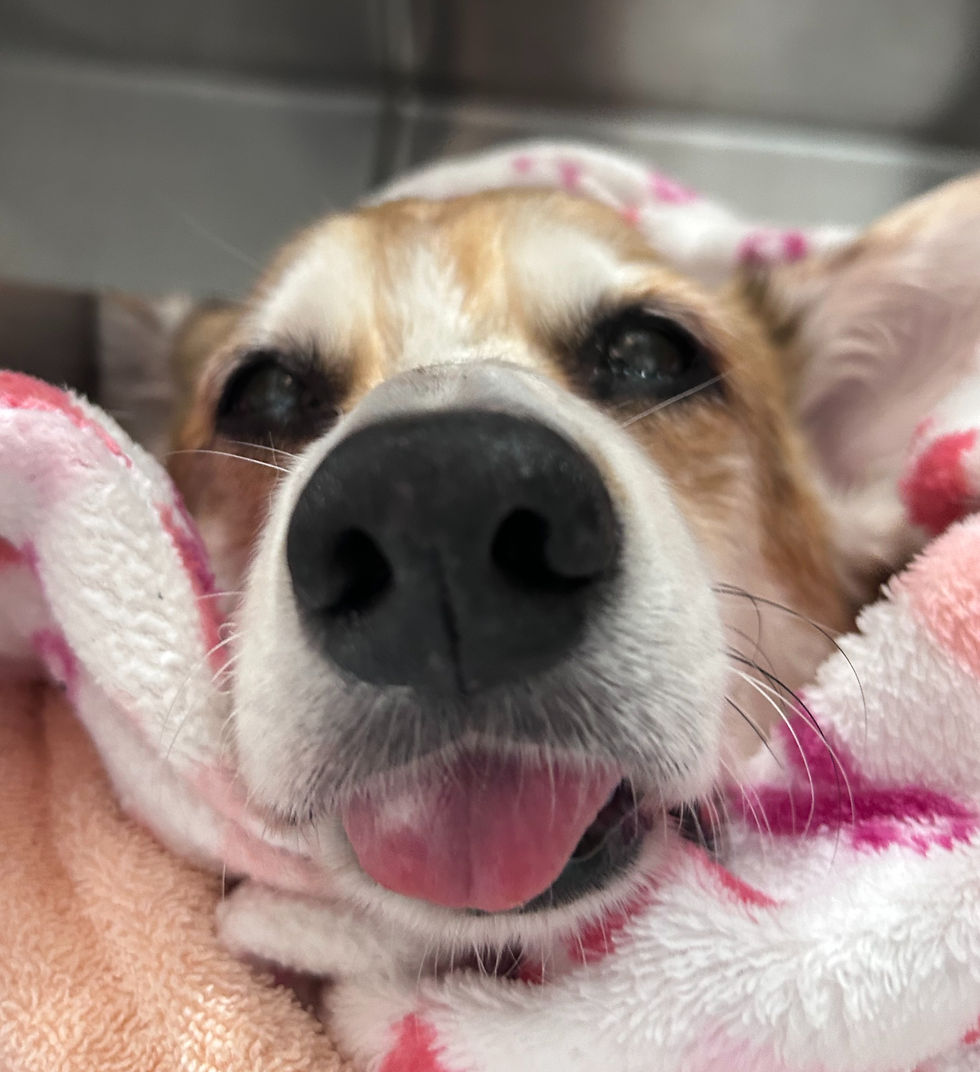Why Pet Dental Health Is Just as Important as Human Dental Care
- Tribeca Veterinary Dentistry
- Oct 28
- 3 min read

When it comes to health, most of us wouldn’t dream of skipping our own dental check-ups. We know that brushing, flossing, and regular cleanings protect us from cavities, gum disease, and even more serious systemic health issues. But did you know the same applies to your pets?
Pet dental health is often overlooked, but it plays a vital role in your dog or cat’s overall well-being. Urban pet parents—especially those of us who treat our dogs and cats like family—often provide the best food, exercise, and enrichment. Yet dog dental care and cat dental care sometimes slip through the cracks. The truth is, your pet’s teeth and gums require the same level of attention and care as your own.
Shared Risks: Pets and People
Just like humans, dogs and cats are prone to:
Plaque and tartar buildup – Without regular cleaning, bacteria harden on the teeth.
Periodontal disease in pets – Inflammation and infection that can lead to tooth loss.
Bad breath in dogs and cats – A common sign of deeper dental problems.
Systemic health issues – Untreated oral disease can affect the heart, liver, and kidneys in both people and pets.
Dental Discomfort Isn’t Always Obvious
When you have a toothache, you schedule a dental appointment right away. But pets often mask their pain, a natural instinct for survival. They may still eat, play, and act “normal” while struggling with significant discomfort. Subtle signs of dental disease in pets include:
Chewing on one side
Pawing at the mouth
Dropping food
Avoiding harder kibble or toys
If you notice these symptoms, it may be time to consider a professional veterinary dental cleaning.
Preventive Care: A Shared Responsibility
Urban living means plenty of access to quality care—for both people and pets. If you wouldn’t skip your own dental visit, why skip your pet’s? Routine pet dental check-ups are just as important as annual wellness exams.
Professional pet teeth cleaning in NYC can safely remove plaque and tartar under anesthesia, just like your own dentist does.
At-home care, like how to brush your dog’s teeth or how to brush your cat’s teeth, helps slow down disease progression between professional cleanings.
The Bottom Line
Good dental health isn’t a luxury—it’s a necessity. By prioritizing your pet’s oral care the same way you do your own, you’re helping them live a longer, healthier, and happier life.
At Tribeca Veterinary Dentistry & Oral Surgery, our board-certified veterinary dentist provides advanced, compassionate dental care tailored to each pet’s needs. Whether it’s a routine cleaning or treatment for advanced gum disease, we’re here to keep those tails wagging and purrs going strong.
Pet Dental Health FAQs
Is pet dental care really necessary?
Yes. Just like people, pets develop plaque, tartar, and gum disease. Without treatment, oral disease can cause tooth loss, infections, and even damage to the heart, kidneys, and liver. Learn more about why dental care is important for pets.
How often should pets get dental check-ups?
We recommend a dental exam every 6–12 months. Some pets—especially small breeds, brachycephalic dogs (like French Bulldogs), and older cats—may need more frequent evaluations by a board-certified veterinary dentist.
How often should my dog or cat get their teeth cleaned?
Most pets benefit from a professional veterinary dental cleaning once a year, though frequency depends on breed, age, and oral health.
Can I brush my pet’s teeth at home?
Absolutely. Brushing your dog’s teeth or brushing your cat’s teeth daily helps slow down plaque buildup. Check out our guides on how to brush your dog’s teeth and how to brush your cat’s teeth.
What are signs of dental disease in pets?
Bad breath
Dropping food or chewing differently
Bleeding gums
Loose or missing teeth
Reluctance to eat hard food or play with toys
See our full guide: Signs of Dental Disease in Pets.
Is anesthesia necessary for pet teeth cleaning?
Yes. Safe anesthesia is essential for proper cleaning, x-rays, and extractions when needed. Read more about anesthesia and pet dental safety.
.png)



Comments